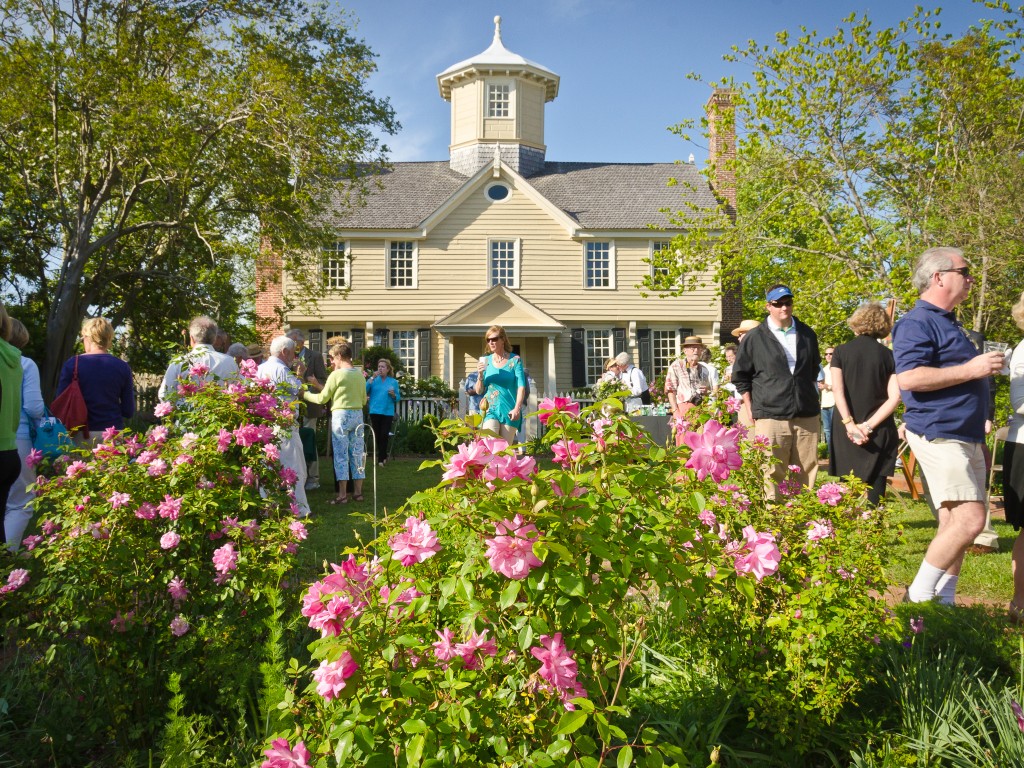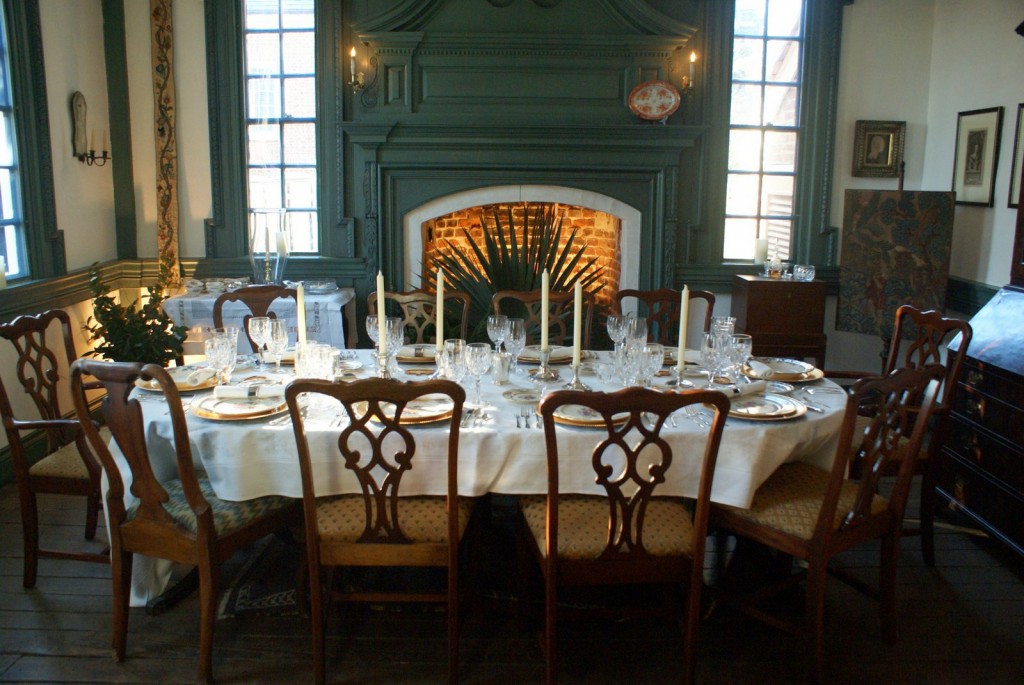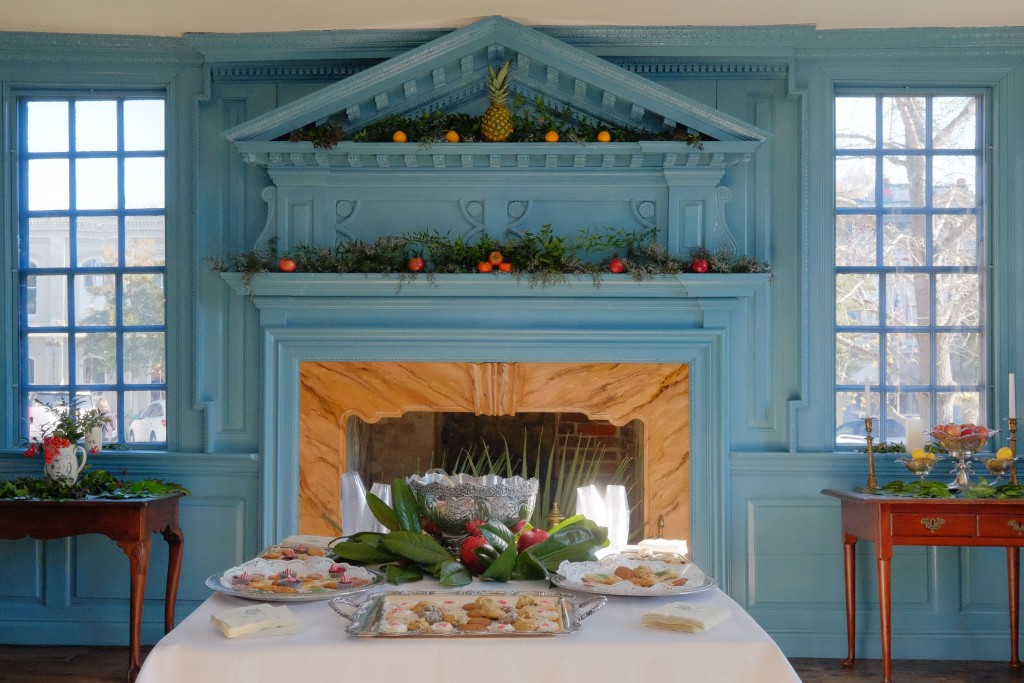The Cupola House
National Historic Landmark (1970) with National Significance
For over 250 years, the Cupola House has stood watch over the Edenton Bay. Built in 1758 by Francis Corbin, land agent for John Carteret, Earl of Granville; one of the last of the famous Lords Proprietors. Granville, in the 17th century, acquired vast territories south of Virginia from King Charles II.
Corbin died in 1767, and Dr. Samuel Dickinson purchased the house in 1777. His descendants called the Cupola House home for over 141years. The house was originally clad in rusticated siding-wood carved to look like stone. There was also a Widow’s Walk around the massive Cupola where the Dickinson-Bond women had tea.
The wealth of the family declined to where the last of the family were unable to properly maintain the house. The Cupola House’s once formal gardens were sold for commercial development until only 10 feet of space remained beside the house. Exterior paint was worn away, and the building was suffering from disrepair. Its loving, but impoverished, owners found no recourse but to sell off family treasures; even the magnificent first floor Georgian woodworks were sold to the Brooklyn Museum. The house was threatened, and a historic landmark was near death.
In 1918, citizens rallied to form an organization to save the Cupola House. This organization eventually became The Cupola House Association, still today dedicated to its protection.
Today the Cupola House stands proudly watching over the bay. The formal colonial-style gardens have been restored. Inside the magnificent woodwork has been restored and local citizens have returned many of the Dickinson artifacts. The interior is furnished with fine furniture dating from 1680 to 1820- the 1750s London tall case clock has been in the house since 1777,the 1760s whale oil lamp is the first in Edenton, and the Dickinson china is secure in the barrel-back cupboard.
It is an anchor to the lovely town of Edenton and a memorial to those who cared and took action to save this architectural treasure.

Spring party on the lawn of the Cupola House, designated by the US Department of Interior as a National Historic Landmark (1970) with National Significance – photo Kip Shaw
The house is of Jacobean design and is known as the finest example of this architectural type south of New England. Corbin died in 1776, and the Cupola House was sold to Dr. Samuel Dickinson who, was married to Elizabeth Penelope Ormond, one of the women who signed the “Edenton Tea Party” resolutions. (Another stop on the “Museum Trail”)
The local citizen’s endeavor to save the Cupola House is the earliest community preservation effort in North Carolina to save an historic structure. The Cupola House today is a true treasure of colonial history. Its beautiful woodwork has been reproduced exactly as the original by local craftsmen and women — the Cupola House is a delight to visit.
In 2008 the Cupola House experienced its 250th anniversary and a total restoration, inside and out. The Association leadership submitted grant request to the “Save America’s Treasures” Program of the National Park Service and awarded a matching grant, that grant along with 6 others, local contributions and matching-in-kind funds, paid for a $339,000 make over. Today the house is in superior shape including a shingle roof of Alaskan cut pine hand cut in Virginia by craftsmen who specialize in historic properties such as Mt Vernon, Monticello, and Williamsburg
Annually, visitors from around the world come to Edenton to view the Cupola House and enjoy its colonial heritage gardens. The gardens are part of the Heritage Gardens of America and are tended with loving care by volunteers who call themselves, “Weeders”. The guided tour of the elaborate interior and its important collections of period furniture and textiles is truly breathtaking!
These collections, in accompaniment with the extraordinary architectural aspects of the building are crucial to enable an understanding of the Colonial era history. Students and professors visit regularly to study the collections and the building’s unique architecture featuring its exceptional interior finishes. You may join them most weekends or with a tour guided by docents of the Historic Edenton State Historic site. Tickets available at: 108 N Broad St, Edenton, NC 27932.
Check out the Cupola House Association’s website to learn more.
Visit and learn more about other sites on the Edenton Museum Trail:
(1) Barker House
(3) Joseph Hewes & 1778 Cannons
(6) 1767 Chowan County Courthouse (no QR code on pedestal sign)
(7) Old Jail
(8) Oldest House in North Carolina
(10) 1800/1827 James Iredell House (no QR code on pedestal sign)
(11) Kadesh Church
(13) 1758 Cupola House
(15) 1886 Roanoke River Lighthouse (no QR code on pedestal sign)




